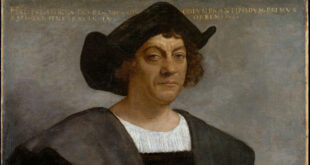
In the column I wrote last month about widespread efforts to blot out Columbus Day, I touched upon a game-changing encounter that took place a quarter of a century ago.
In July 1991, Native- and Italian-American leaders entered a room as adversaries and left as allies who embraced each other’s cultures and supported each other’s causes. As a result, peace reigned over Chicago’s quincentennial Columbus Day celebrations.
But how exactly did this remarkable détente occur? For the answers, I turned to its principal architect: Dominic DiFrisco. A gifted public relations professional and talented mediator, he served as president of the Joint Civic Committee of Italian Americans at the time.
When he caught wind of plans to disrupt the city’s celebration of the 500th anniversary of Columbus’ voyage, he brought his considerable skills to bear, playing a key role in transforming conflict into an unprecedented spirit of cooperation.
Seizing the initiative, he reached out to the architects of the local protest movement, James Yellowbank and Sam Keahna, inviting them and other Native American leaders to a dinner at Como Inn with their Italian-American counterparts. At that first gathering, DiFrisco drew the ire of his own community by making a groundbreaking accommodation.
“I told them that, from then on, I would not use the word ‘discover’ in relation to Columbus’ voyages, I would use the word ‘encounter,’” he explains. “My own people pilloried me afterward for caving in, but I felt it was a crucial concession in order to break the ice.”
When reports of DiFrisco’s efforts reached Illinois Governor Jim Edgar, he deployed his director of ethnic affairs, Pat Michalski, to organize a formal meeting under the aegis of his office. As the discussion progressed, hostility and wariness gave way to understanding and friendship.
“They shared the pain they’ve experienced as a community and what Columbus represented to them and we shared our pain as a community and what Columbus represented to us,” DiFrisco says. “We acknowledge them as the original Americans and welcomed them to our table as brothers and sisters. We all came to understand that there was more that united than separated us. To be frank, I think we just hit it off.”
Soon after the meeting, DiFrisco sent a letter to Governor Edgar supporting the Native-American campaign to close the Dixon Burial Mounds to public viewing.
And when news of the historic accord reached Italy, something equally extraordinary happened. “To this day, I’m not sure who gave the green light, but we were invited to put together a delegation of Native- and Italian-American leaders to travel to Italy as guests of the Italian government!” DiFrisco recounts.
During the visit, the Italian Parliament bestowed honorary citizenship upon the Native Americans and they were granted a private audience with Pope John Paul II. “The pope put his arm around James Yellowbank’s shoulder and said, “Sono con voi,’” DiFrisco recalls. “When I told him it meant ‘I am with you,’ they all wept.”
The following year’s quincentennial parade came and went without incident. In fact, when Keahna spied a small cluster of protestors along the parade route, he walked over to them, chastised them, and insisted that they leave, DiFrisco reports.
DiFrisco, Yellowbank and Keahna remained lifelong friends, with Keahna even bestowing an eagle feather upon DiFrisco, making him an honorary member of his tribe.
So what lesson does this remarkable chapter in history teach us? “In any controversy involving different cultures, rather than engaging in head-to-head confrontations, it’s always best to extend an olive branch,” DiFrisco opines.
Yellowbank and Keahna have both passed away, leaving the Native American communities in the hands of a younger, more radicalized leadership. Will a similar approach work today? It’s impossible to know, but it’s certainly worth a try.
 Fra Noi Embrace Your Inner Italian
Fra Noi Embrace Your Inner Italian





